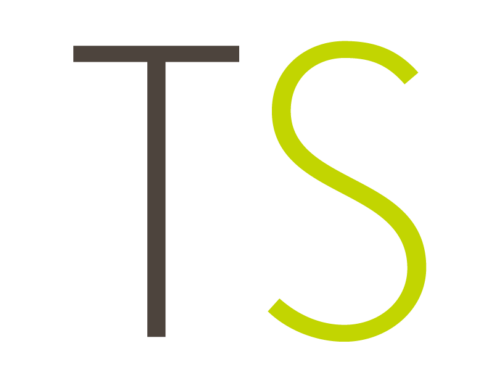Employer Q&A: Further Guidance on the Coronavirus Job Retention Scheme
Following on from the Chancellor’s announcement earlier this month to extend the Coronavirus Job Retention Scheme (CJRS) (also known as the furlough scheme), the full guidance setting out details on making claims under the extended CJRS has been released.
If anyone has any questions after reading the Q&A below, they should contact a member of our Employment Team at emp@teacherstern.com.
1. Who can claim under the extended scheme?
All UK employers that cannot maintain their workforce due to their operations being affected by COVID-19 are eligible to claim for a grant under the CJRS. Employers need not have previously used the CJRS to be eligible.
The extended CJRS will be available from 1 November 2020 to 31 March 2021, although the level of government support will be reviewed in January 2021.
For claims in respect of periods after 1 November 2020, you can claim for furloughed employees that were employed and on payroll on 30 October 2020. For periods that end on or before 31 October 2020, you can only claim for an employee if you have previously furloughed that employee before 1 July 2020 and have submitted a claim for this by 31 July 2020.
Flexible furlough will continue to be permitted so employees can work part-time and receive a grant for unworked hours.
2. Which employees are eligible to be claimed for?
You can claim for all employees who were on your payroll by midnight on 30 October 2020 so long as you have made a PAYE Real Time Information (RTI) submission to HMRC between 20 March 2020 and 30 October 2020 in respect of that employee.
There is no requirement for the employee to have been furloughed under the CJRS previously and you can place a claim for employees on any type of contract including agency workers and those on zero-hour contracts. It is also possible to claim for foreign nationals on all categories of visa under the CJRS.
3. What is the maximum number of employees that I can claim for?
In respect of claims for the period on or before 31 October 2020, the amount that an employer can claim cannot exceed the maximum number of employees it claimed for in any previous claim.
From 1 November 2020, there is no limit, so employers can claim for any number of employees that were employed provided they were on the payroll by midnight on 30 October 2020.
4. How much can I claim?
For claims from 1 November 2020, the government will subsidise up to 80% of employee’s wages (capped at £2,500) and there will be no requirement for the employer to top-up for the hours not worked. However, employers will continue to be responsible for the pension and National Insurance contributions for furloughed employees.
To calculate the exact amount you can claim for a specific employee, you can use the government’s Job Retention Scheme Calculator.
The government has introduced relevant claim deadlines under the CJRS. The relevant claim deadline for the duration of the extension of the CJRS (November 2020 – March 2021) is 14 calendar days after the month you are claiming for (unless this is a weekend, in which case the deadline will be the next working day).
Therefore, claims made for 1 November 2020 must be made by 14 December 2020.
5. What is happening with the retention bonus?
As the CJRS is being extended to March 2021, the retention bonus has been withdrawn and will not be paid out to employers in February 2021 as originally planned.
6. Can I furlough employees who are serving their notice period?
Yes, but only until 1 December 2020.
Employers can claim a grant for furloughed employees who are serving a notice period up until 1 December. This will mean that where an employee is serving a notice period which is likely to run into December, employers will not be able to claim for any of that employee’s pay beyond 1 December 2020. It is important to note that the furlough grant cannot be used for statutory redundancy payment.
From 1 December 2020, employers cannot claim under the CJRS for any employees serving a notice period. This includes both contractual and statutory notice periods and therefore covers situations where the employee has given notice of termination of their employment e.g. resignation or retirement.
Where an employee subsequently begins serving a notice period, the employer will need to make an adjustment where the notice period covers a day for which a claim has previously been submitted.
7. Can I require employees to take holiday while on furlough?
Yes, you can require an employee to take their holiday whilst they are on furlough (provided they are given the correct notice). You will need to provide employees with at least twice as many days notice as the amount of days they are required to take as holiday. If you decide to do this, you must top up the employee’s wages to 100% of their usual wages for the period the employee is on holiday.
8. What about employees who have been made redundant?
Employers can re-hire and claim for employees that were employed and on the payroll on 23 September 2020 who were made redundant or stopped working for them. To claim for such employees, the employer must have made a PAYE Real Time Information (RTI) submission to HMRC from 20 March 2020 to 23 September 2020, notifying a payment of earnings for those employees.
As per question 6 above, employees can claim for employees who are serving a statutory notice period as part of their redundancy process up until 1 December 2020.
From 1 December onwards, employers can continue to claim for employees who are a part of a redundancy consultation process under the CJRS, but they cannot continue to claim once a redundancy is confirmed and the statutory notice period commences.
9. What happens if my employee’s health has been affected by coronavirus (COVID-19)?
Employers can furlough employees who have caring responsibilities from coronavirus or are shielding in line with public health guidance. There is no obligation on the employer to furlough such employees and employers should not consider short-term sickness or self-isolation as a reason to furlough an employee.
All furloughed employees will retain their statutory rights including the right to be paid statutory sick pay (SSP). Where a furloughed employee becomes sick, you will have to decide whether to pay them SSP or furlough pay. You cannot claim furlough pay for an employee who is also receiving SSP.
Although employers will have to pay SSP themselves, where the sickness is coronavirus-related, they may be eligible to receive a rebate for up to two weeks of SSP. Employers may also qualify for the SSP rebate scheme for non-furloughed employees who are off sick due to coronavirus.
10. Do we need to put written agreements in place?
Yes. It is a requirement of the CJRS for the employer to have written to the relevant employee confirming that they will be placed on furlough leave. There is no requirement to receive a written response and you should obtain the employee’s agreement to this change to their employment.
If you intend to place an employee on flexible furlough, you will need to keep a written agreement of the new arrangement which is consistent with employment, equality and discrimination laws.
You should keep a record of these written agreements for 5 years and you should remember to keep a written record of the number of hours worked by any employee who is on flexible furlough.
11. Are there any other changes to the CJRS?
- From December 2020, HMRC will publish details (name and company number) for all employers who have claimed under the CJRS.
- Employees can engage in (and should be encouraged to engage in) training in the hours that they are recorded as being furloughed provided that the training does not provide services or revenue for their employer. During this period, employees will be entitled to be paid their minimum wage.
- From November 2020, there is no cap on the number of employees for which an employer can claim under the CJRS for.
- You can agree with an employee to bring their maternity leave to an end earlier than anticipated in order to enable that employee to be furloughed. If your employee decides to do this, they will need to give notice of at least 8 weeks’ prior to returning to work. They can be furloughed from the date you have agreed that they will return to work.
If you have any questions after reading this Q&A, please contact a member of our Employment Team at emp@teacherstern.com.
Authors: Neha Solanki and Arta Obertinca






